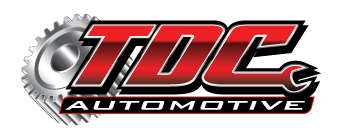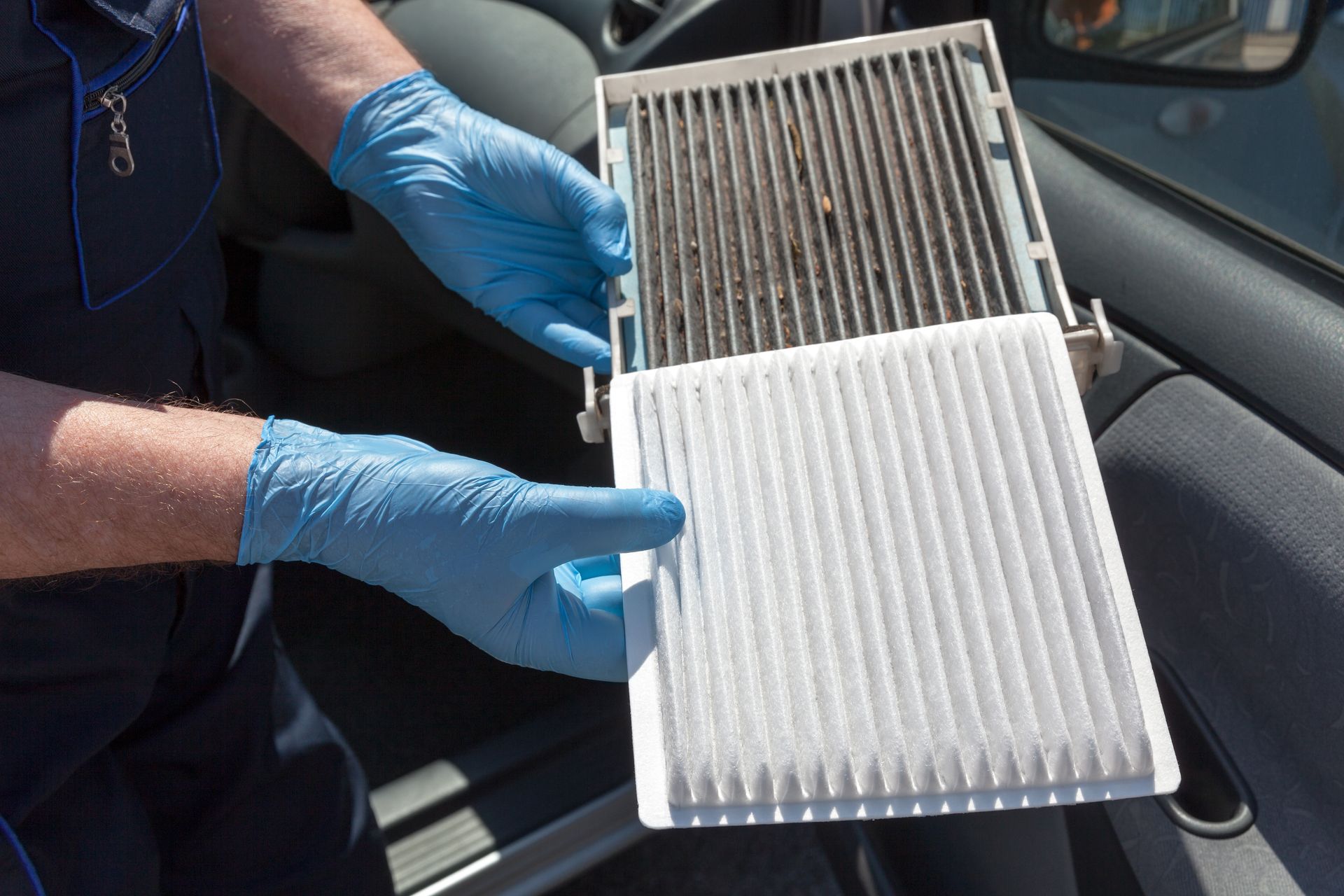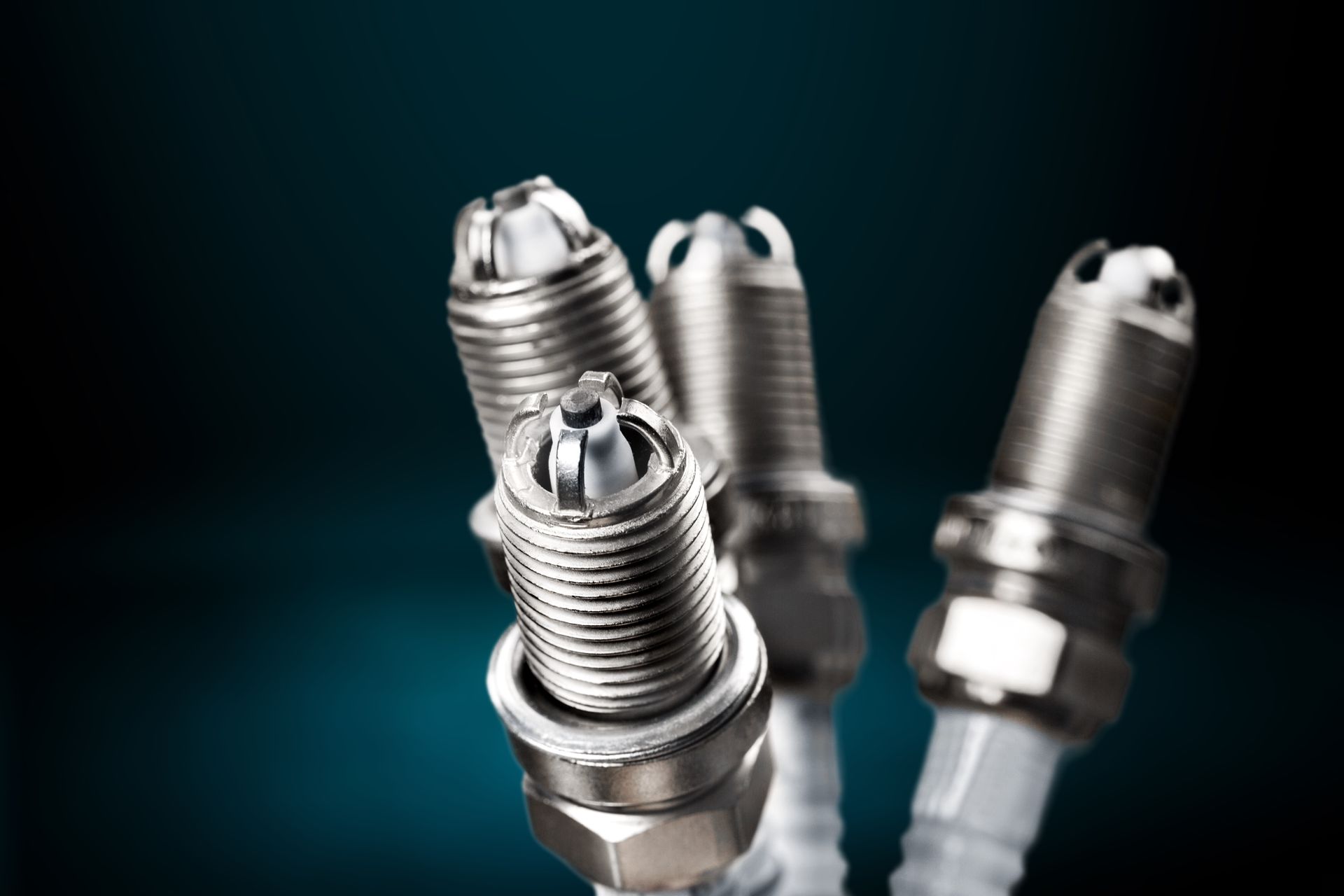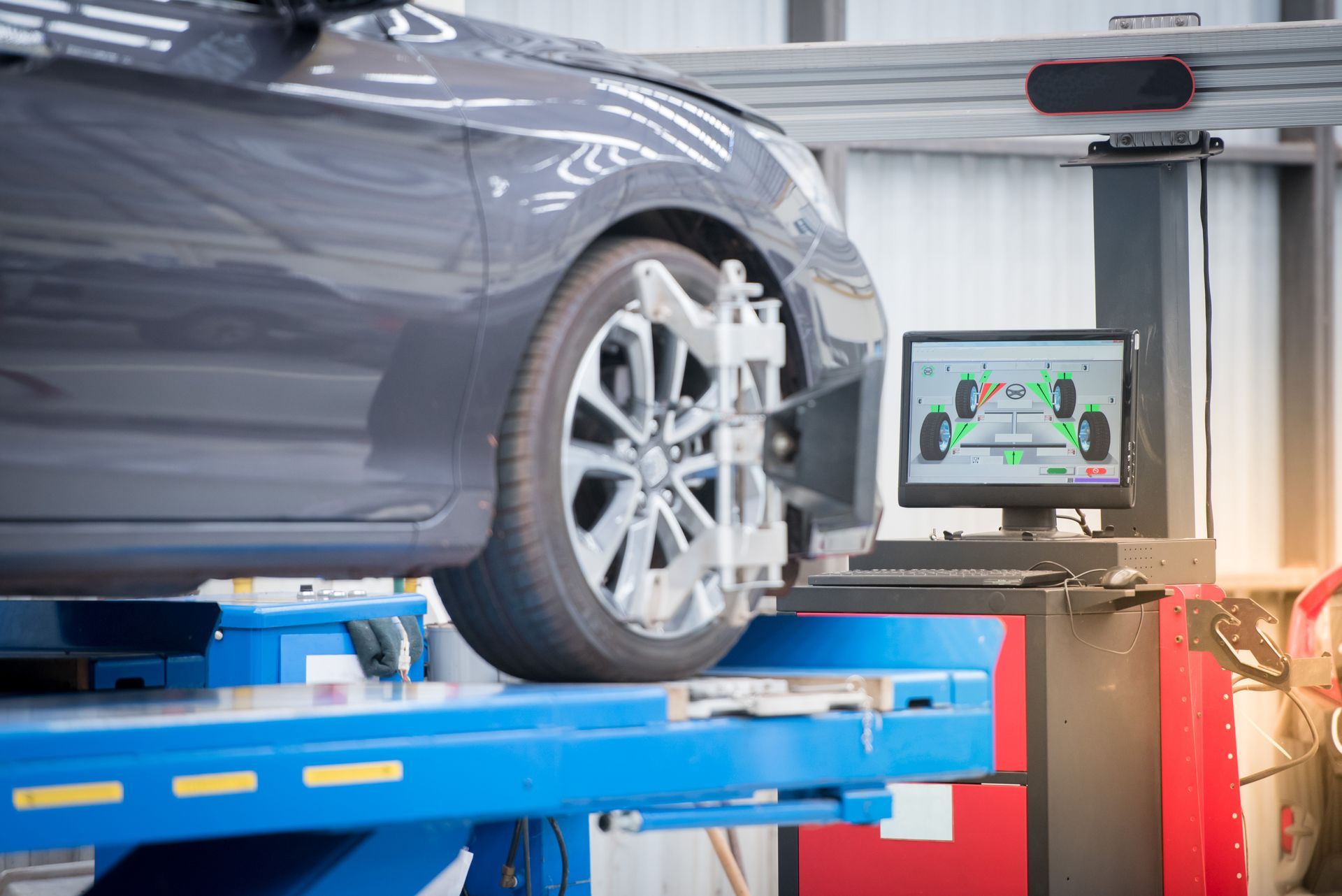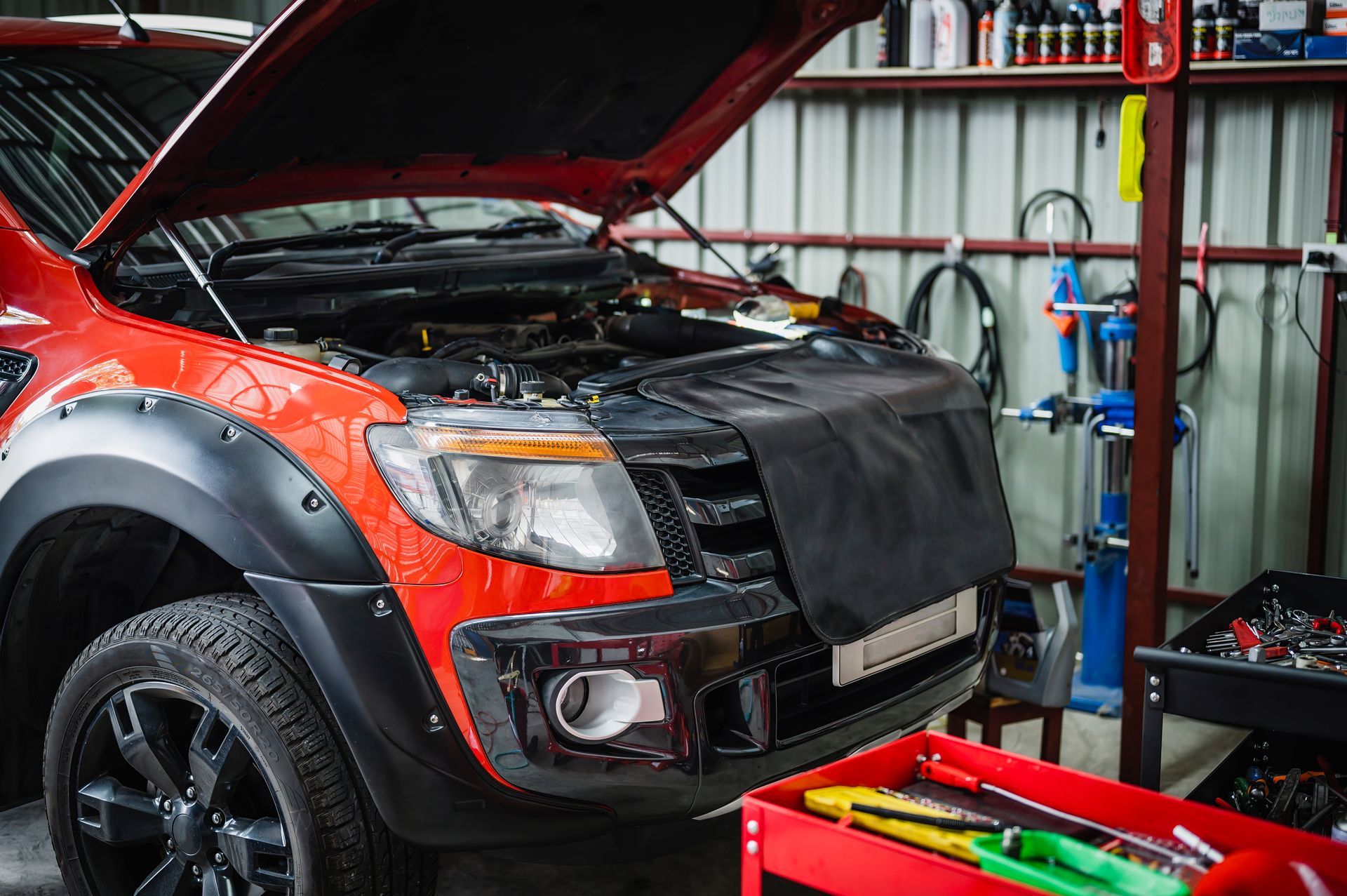It’s one thing to feel a bit of road feedback through the steering wheel, but if your truck starts to shake or vibrate noticeably at highway speeds, it’s a sign that something needs attention. Vibrations can start out subtle, but they often get worse the faster you drive. What feels like a minor annoyance today could turn into a serious issue tomorrow.
If your truck is vibrating once you hit 60 or 70 miles per hour, several possible causes exist. Here are six of the most common reasons and what to do about them.
1. Unbalanced or Damaged Tires
Tire balance is one of the first things to check when vibrations begin at higher speeds. Even a small weight imbalance can cause your wheels to wobble as they spin, which translates into shaking you can feel in the steering wheel or through the seat.
Tires can also develop flat spots or become out of round due to uneven wear, impact damage, or long periods of sitting. If you’ve recently hit a pothole or curb, the vibration could be the result of internal tire damage that isn’t immediately visible.
2. Worn or Bent Suspension Components
Your suspension system is responsible for keeping the truck stable and absorbing bumps in the road. If a component like a control arm, tie rod, or ball joint becomes loose or worn out, it can create a noticeable vibration when driving at speed.
Sometimes the truck might feel fine at low speeds, but the instability becomes more obvious the faster you go. If you hear any clunking or knocking along with the vibration, it’s worth getting your suspension inspected right away.
3. Driveshaft or U-Joint Issues
The driveshaft is a critical part of the drivetrain for rear-wheel-drive and four-wheel-drive trucks. If it’s out of balance or if the universal joints (U-joints) are worn, you may feel a rhythmic vibration that increases with speed.
This type of vibration often comes from underneath the vehicle and may get worse under acceleration. Ignoring it for too long can lead to more serious damage, so it’s best to get it looked at sooner rather than later.
4. Engine or Transmission Mount Problems
The engine and transmission are supported by mounts that keep them in place while absorbing movement and vibrations. If one of these mounts fails, you might start to feel vibrations through the cab, especially when accelerating or driving at steady speeds on the highway.
A bad mount might not be obvious at first glance, but it can affect how the entire vehicle feels. It can also lead to other issues if left unchecked, including stress on exhaust components or driveline misalignment.
5. Misaligned Wheels
Wheel alignment doesn’t just affect tire wear and steering control. It can also lead to high-speed vibrations if the wheels are pointing in slightly different directions. Misalignment can happen gradually over time or suddenly after hitting a large pothole or curb.
If your truck pulls to one side or the steering feels off-center, an alignment check is a good idea. Correcting the alignment can improve ride comfort, handling, and fuel economy.
6. Brake System Imbalance
Even when you’re not actively braking, issues with the brake rotors or calipers can cause vibration. Warped brake rotors or a sticking caliper might create drag that leads to a pulsing or shaking sensation at high speeds.
This is more likely if the vibration is subtle at first and gets worse as the truck warms up. It’s also something that tends to sneak up after long downhill drives or towing, where the brakes have been used heavily.
TDC Automotive – Diagnosing Truck Vibration Issues in West Memphis, AR
At
TDC Automotive, we know how frustrating it is when your truck doesn’t feel right at highway speeds. If you're dealing with vibrations that weren’t there before, let our team track down the cause and get you back on the road with confidence. From tires and suspension to drivetrain and brakes, we handle every part of the process with the attention your truck deserves. Visit our West Memphis location for diagnostics you can trust.
